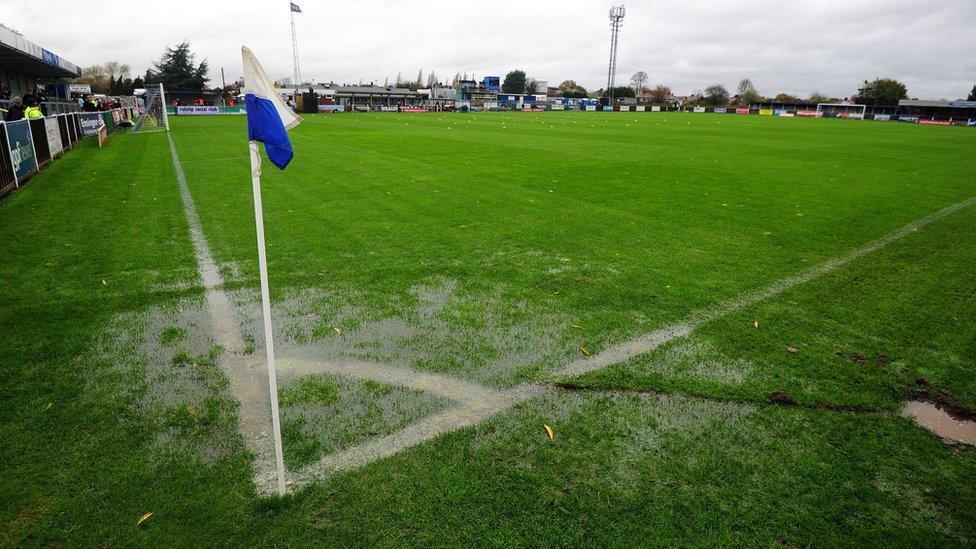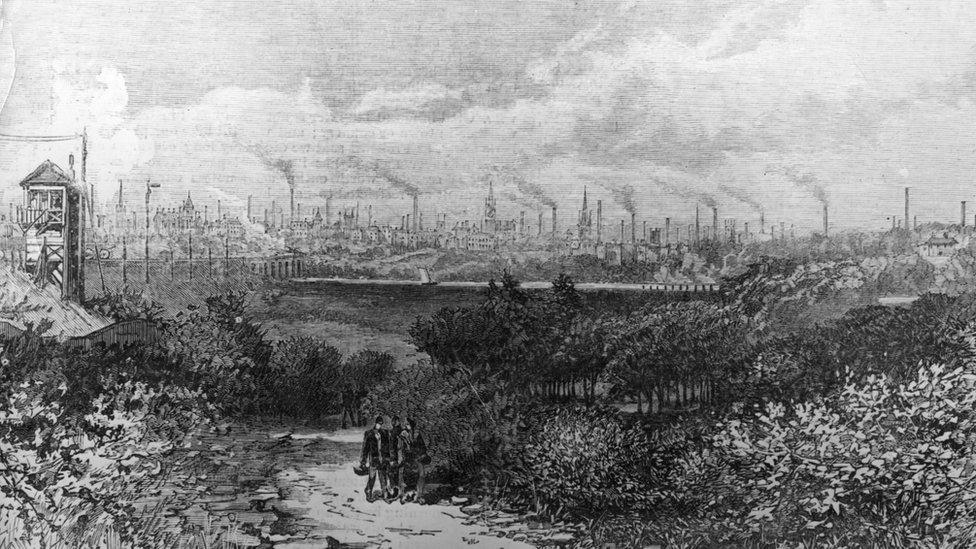The illusion of a concrete Britain
- Published

The British people, it appears, have the mistaken belief that much of the UK has been concreted over. Could it be that the psychological impact of city living means people have a distorted idea of what our own country looks like?
This misunderstanding is suggested by new survey data, external produced by Ipsos Mori. Asked how much of the UK's land area is densely built on, the average estimate was 47%. The far more accurate figure -based on satellite images - highlighted by Professor Alasdair Rae, external and in my blog last November - is 0.1%.
The average Briton thinks 356 times more of our nation's land is concrete jungle than is the reality.
This isn't just a minor misconception. The error helps to distort our mental picture of the UK and shift the politics of land use.
If the UK is viewed as a large football pitch, the people in the survey reckoned that almost all the ground between the goal-line and half-way line is densely developed when, in reality, it would fit into the tiny arc marked for taking a corner.
The 0.1% figure for what is designated "continuous urban fabric" (CUF) was named UK Statistic of the Year by the Royal Statistical Society (RSS) last month.
RSS president Prof Sir David Spiegelhalter said "whatever side of the argument you sit on, this statistic gives true insight into the landscape of the United Kingdom".

Land is designated as CUF under the Corine Land Cover Classification System if over 80% of ground is covered by artificial surfaces like buildings and roads.
In the survey, the pollsters explained this and asked respondents how much of the UK conformed to that definition.
Roughly one-in-six of those surveyed thought more than 71% of the UK was densely built up. The average guess among 16-24 year-olds was 57%.
Why do people get it so wrong? The most likely explanation is that their experience of the UK is predominantly urban.
Bobby Duffy, managing director of the Ipsos Mori Social Research Institute, explains: "The majority of people live and spend their time in built-up areas and this will make up most of their mental image of the country."
But the data suggests that people who live in rural areas are not much better at estimating the built-up nature of the UK than those in towns and cities. The average guess for urban dwellers was 48% and for those in the countryside it was 45%.
In urban Greater London, people thought the correct figure was 46%. In the rural South West, the average estimate was 48%.

If the UK was a football pitch, densely developed areas would fit into one area marked for corner kicks
People's mental image of the UK is not just their personal experience - it is also affected by what they see on television and other media. It is also constructed, I believe, from the narratives about our country that we grow up with.
The story of Britain's treasured green landscapes being gobbled up by greedy industrialists and developers is part of national folklore.
It has its origins in the trauma of the Industrial Revolution, when rural life was rocked by the arrival of big cities, vast metropolises squatting unsteadily on the countryside and changing everything.
Our politics and our culture are shaped by our relationship with the big city and with the bucolic idyll. William Blake warned that England's "green and pleasant land" was threatened by the "dark Satanic Mills" of industry, while Scotland's national poet Robert Burns lamented that: "Man's dominion Has broken Nature's social union."

William Blake wove an image of a rural idyll threatened by dark Satanic mills
The tale of the fragile ecosystem imperilled by monolithic earth-moving equipment (the novel Watership Down is another classic example), acts as a metaphor for the threat we feel to our identity from progress.
Our relationship to the land is fundamental to who we are - the fear that we are being cut off from the soil, our ancient and natural habitat, is powerful.
The myth that we are "concreting over" our countryside plays to these anxieties, magnified in recent years by the social changes brought about by globalisation and new technology. Our cognitive urban bias is, in part, a consequence of that contemporary struggle over national identity and tradition.
There are, of course, legitimate concerns about the threats to our landscape and natural resources. While less than 6% of UK land is built-on, the impact of that development can be felt beyond its physical footprint.
The fact we so overestimate the amount of densely developed land suggests its influence extends into every corner of our environment. It is vital that we have a national conversation about the way we protect and enhance our vital green spaces as population grows.
But it is hard to have an informed and rational debate about housing policy, airport expansion or, for that matter, intensive agricultural methods when the country is so mistaken about the basics. We must open our eyes and our minds to the true geography of the United Kingdom.
- Published9 November 2017